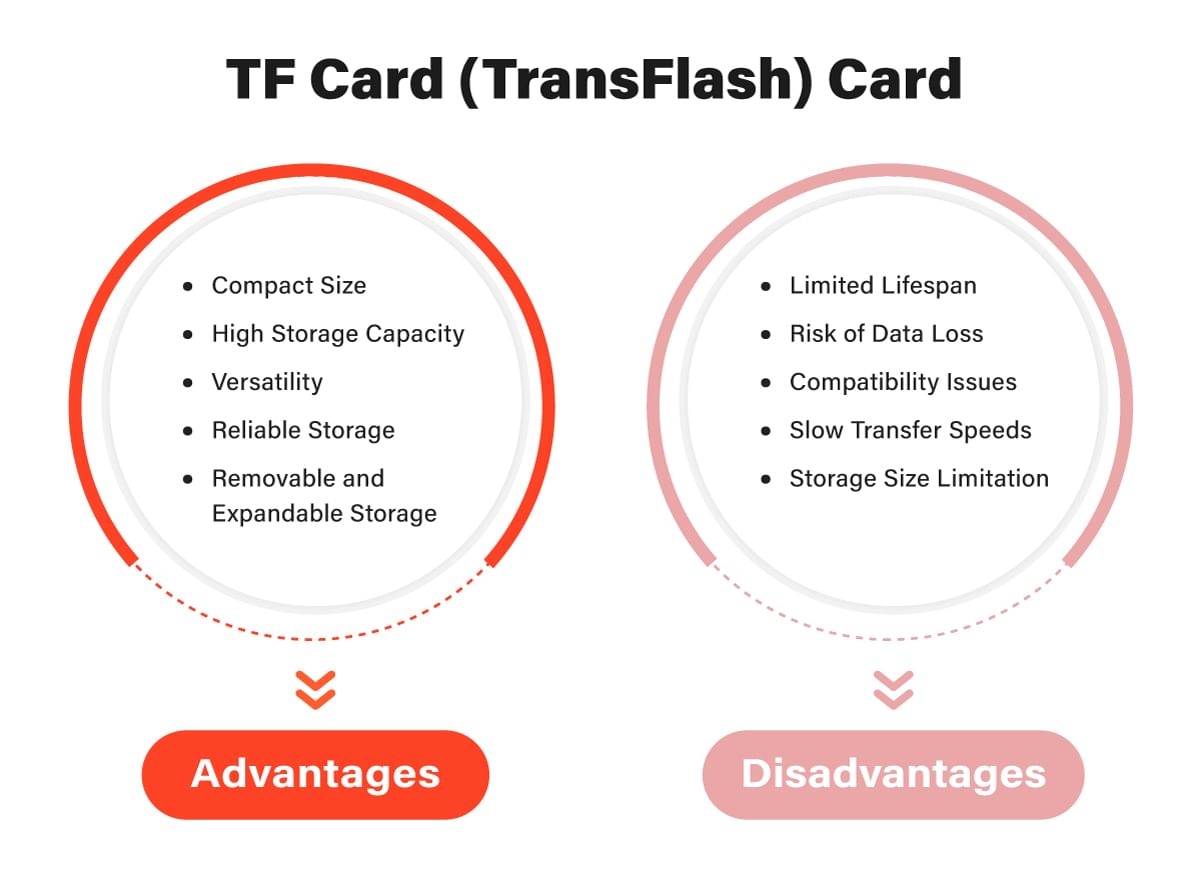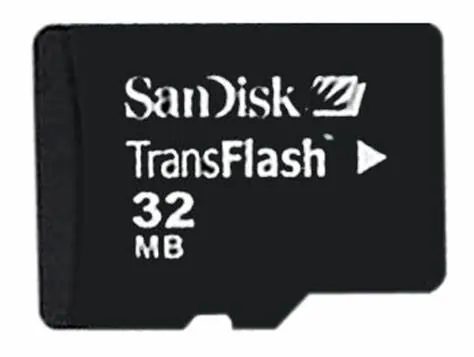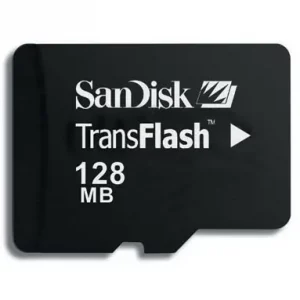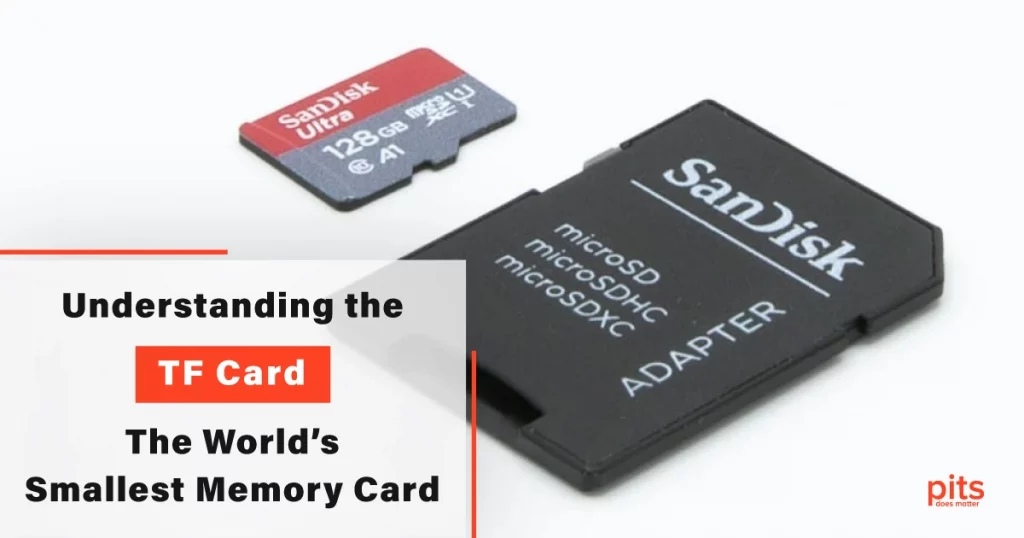In today’s digital age, where data is the lifeline of our electronic devices, the importance of memory storage cannot be overstated. Whether it is mobile phones, digital cameras, or other portable devices, memory cards play a crucial role in expanding storage capacity and ensuring data mobility.
Among the various types of memory cards available, the TF card stands out as one of the smallest and most versatile options. In this comprehensive guide, we will delve into the world of TF cards, exploring what they are, how they work, and their key advantages.

What is a TF Card?
A TF card, short for TransFlash card, is a type of memory card that is often used interchangeably with microSD cards. These cards are part of the secure digital (SD) card family, which includes various types and sizes of flash memory cards designed for use in a wide range of devices, including mobile phones, digital cameras, and more.
TF Card and SD Card: Spotting the Difference
One common misconception is that TF cards and SD cards are different. However, TF cards are essentially a type of SD card. The main difference between the two lies in their physical size and storage capacity.
TF cards are smaller in size compared to SD cards, with dimensions of 11mm x 15mm x 1mm. This makes them ideal for use in smaller devices such as mobile phones and digital cameras where space is limited. On the other hand, SD cards come in three sizes – standard, mini, and microSD – with dimensions ranging from 24mm x 32mm x 2.1mm to 11m
m x 15mm x 1mm. The larger sizes make them more versatile and suitable for use in various devices, including laptops and gaming consoles.
Another key difference between TF cards and SD cards is their storage capacity. TF cards typically have a maximum capacity of 128GB, while SD cards can go up to 2TB. This means that if you need high storage capacity, an SD card would be the better choice.
When it comes to compatibility, both TF and SD cards are widely supported by different devices, especially those with a microSD slot. However, some older devices may only support one type or the other, so it’s important to check your device’s specifications before purchasing a card.

In reality, they are essentially the same thing. The TF card was initially developed by SanDisk, and it later evolved into the microSD card, which is a more common and recognized term. The transition from TF card to microSD card came as part of standardization efforts within the industry.
The term “TF card” is still used in some regions and by certain manufacturers, but it essentially refers to the microSD card, and the two are functionally identical.
How TF Cards Work
To understand how TF cards work, we need to delve into the world of semiconductor flash memory, specifically NAND flash memory. NAND flash memory is a type of non-volatile storage technology that retains data even when the power is turned off. This characteristic makes it ideal for use in portable devices, where data retention is crucial.
TF cards, like microSD cards, are built using NAND flash memory, which is organized into memory cells. The two most common types of NAND flash memory used in TF cards are SLC (Single-Level Cell) and MLC (Multi-Level Cell). SLC is known for its high durability and performance but comes at a higher cost. MLC, on the other hand, is more cost-effective but may have slightly lower performance and endurance.
The TF card’s capacity, such as 128GB, 64GB, 32GB, and so on, is determined by the number of NAND memory cells and their capacity. Larger capacity cards have more memory cells, allowing them to store more data.
TF Card in Action
Now that we understand the basics of how TF cards work, let’s explore how they are used in various devices and scenarios.
Mobile Phones
Mobile phones have become an integral part of our daily lives, serving as communication tools, cameras, and portable entertainment devices. TF cards, often used interchangeably with microSD cards, are essential for expanding the storage capacity of mobile phones.
With the ever-increasing demand for storing photos, videos, apps, and other data on our smartphones, TF cards provide a convenient and cost-effective solution. Many mobile phones come equipped with a TF card slot that supports microSD cards, allowing users to easily increase their device’s storage capacity.
Digital Cameras
Digital cameras have seen a remarkable transformation over the years, evolving from bulky DSLRs to compact and feature-rich devices. TF cards have played a significant role in this transformation by offering a compact and high-capacity storage solution. Professional photographers and casual users alike rely on TF cards to store high-resolution images and videos captured on their digital cameras.

The high-speed data transfer capabilities of TF cards ensure that users can capture multiple shots in rapid succession without experiencing delays.
Card Readers
To access the data stored on TF cards, a card reader is often required. Card readers come in various forms, including USB card readers and built-in card slots on laptops and desktop computers. These readers allow users to transfer data between their TF cards and other devices, such as computers, tablets, and printers.
Motorola and SanDisk: Pioneers of TF Cards
Motorola and SanDisk played pivotal roles in the development and popularization of TF cards. Motorola was among the first companies to use TF cards in their mobile phones, setting a precedent for the mobile industry. SanDisk, a renowned manufacturer of flash memory products, introduced TF cards to the market and later contributed to the standardization process, leading to the adoption of the microSD card format.
The World's Smallest Memory Card
One of the standout features of TF cards is their incredibly compact size. Measuring just 15mm x 11mm x 1mm, TF cards are among the smallest memory cards in the world. This small form factor makes them suitable for use in devices where space is at a premium, such as ultra-compact smartphones, action cameras, and wearable devices.
The TF card’s tiny size does not compromise its performance or storage capacity. Despite its diminutive dimensions, TF cards are available in a wide range of capacities, from a few megabytes to multiple terabytes (TB) in some advanced models. This versatility makes TF cards an excellent choice for various applications, from storing a few photos on a smartwatch to recording hours of high-definition video on an action camera.
Advantages of TF Memory Cards
Now that we have a thorough understanding of TF cards, let’s explore some of the key advantages they offer:
Compact Size
As mentioned earlier, TF cards are incredibly small, making them suitable for devices with limited space.
High Capacity
Despite their small size, TF cards are available in a wide range of capacities, offering ample storage space for various applications.
Data Mobility
TF cards are easily transferable between devices, allowing users to carry their data with them wherever they go.
Durability
TF cards are built to withstand physical shocks and are resistant to extreme temperatures and humidity.
Compatibility
TF cards are compatible with a wide range of devices, including smartphones, tablets, digital cameras, and more.
Cost-Effective
TF cards offer a cost-effective solution for expanding storage capacity without the need to invest in new devices.
The Evolution of TF Cards
The TF card, which later became known as the microSD card, has undergone significant evolution since its inception. Technological advancements have led to improvements in capacity, speed, and durability, making TF cards even more versatile and practical for modern devices.
TF cards, also known as microSD cards, are an integral part of our digital world, providing convenient and reliable storage solutions for a wide range of devices. Their compact size, high capacity, and compatibility make them a go-to choose for expanding storage in mobile phones, digital cameras, and many other portable devices.
As technology continues to advance, TF cards are likely to keep pace, offering even greater storage capacity and faster data transfer speeds. Whether you’re a photographer looking to store high-resolution images or a smartphone user in need of extra space for apps and media, TF cards are here to meet your storage needs. So, the next time you insert a TF card into your device, take a moment to appreciate the incredible technology packed into this tiny memory card.
Frequently Asked Questions
What is a TF card?
A TF card, short for TransFlash card, is a type of memory card used for storing data in electronic devices like smartphones, digital cameras, and more. It’s also commonly known as a microSD card and is part of the secure digital (SD) card family.
How does a TF card work?
TF cards use NAND flash memory technology to store data. This memory is organized into cells, and the capacity of the TF card is determined by the number and size of these cells. When you save data on a TF card, it is stored in these memory cells and can be accessed whenever needed.
Are TF cards and microSD cards the same thing?
Yes, TF cards and microSD cards are essentially the same. The TF card was initially developed by SanDisk and later evolved into what is now commonly referred to as the microSD card. The two terms are often used interchangeably.
What devices support TF cards?
TF cards (or microSD cards) are supported by a wide range of devices, including mobile phones, tablets, digital cameras, action cameras, drones, gaming consoles, and more. Many modern devices come with a dedicated TF card slot or support microSD card expansion.
What capacity TF cards are available, and how do I choose the right one?
TF cards come in various capacities, such as 128GB, 64GB, 32GB, and so on, with some models reaching terabyte capacities. To choose the right one, consider your storage needs. If you plan to store a lot of photos, videos, or apps, opt for a higher-capacity card. Smaller capacity cards are suitable for basic storage needs or devices with limited space.
